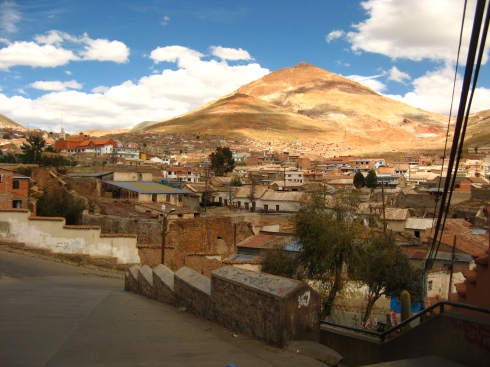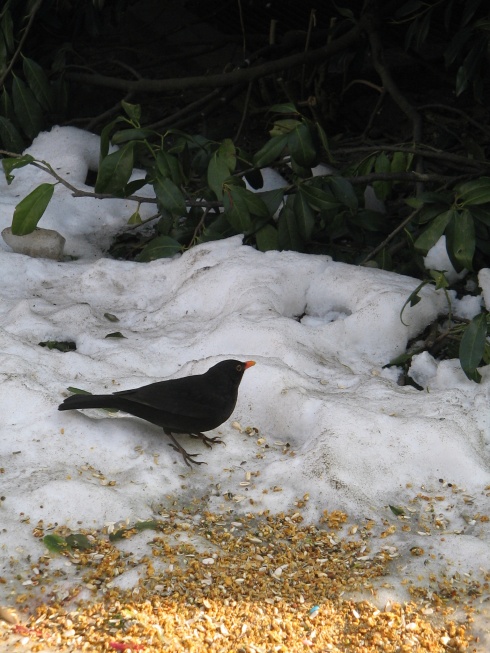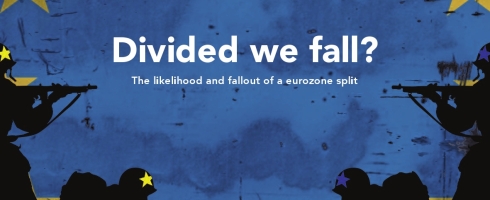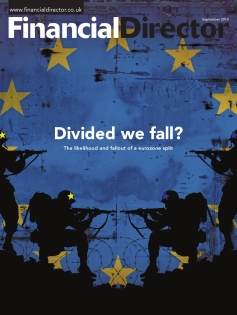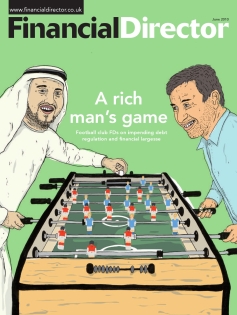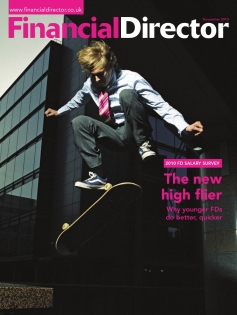Bolivia’s doble aguinaldo
7 JanWanderlust: Five reasons to get friendly with Bolivia
21 MayEarlier this month I managed to squeeze in the first piece of journalism I’ve done since I began my life as a Master’s student in October 2012. I was asked to write a blog for Wanderlust, a monthly, British travel magazine – one of the finest – about my experience travelling in Bolivia. The published piece is below – have a glance. I am going back to Bolivia in June for my fieldwork – studying the consumption of second-hand clothing in La Paz and Cochabamba – very exciting times! I only passed through La Paz on my last trip, so this time I’ll have a fortnight to see what it’s all about (and I’m particularly excited to visit the National Museum of Art, which seems to contain a boatload of old religious art, one of my favourite things).
The World Economic Forum says Bolivia is the world’s unfriendliest country. Melanie Stern shares her five reasons why the intrepid should ignore and get there pronto
The World Economic Forum’s 2013 Travel and Tourism Competitiveness Report put Bolivia first in a list of ten countries it deemed the least friendly for visitors. In the category “attitude of population towards visitors” Bolivia ranked top of the least friendliest nations after Venezuela, Russia, Iran and Pakistan, among others.
I’m sure intrepid travellers thought two things in response: that sounds odd, and why don’t I see for myself? Bolivian people are definitely friendly – they are curious about visitors, eager to help you get the best out of their country and they want you to leave happy.
Bolivia is emerging strongly from a long history of post-colonialism and neo-liberal economics, and its infrastructure is adequate for the needs of keen travellers. Part of the fun of experiencing a nation in Bolivia’s phase of development is negotiating a new culture and can be readily navigated by anyone with common sense.
Most people who spend time in Bolivia don’t forget it in a hurry, and they come away with new friends and an enriched view of the world. Follow the bumpy roads, the frigid plains, eat where the locals eat, and you’ll be duly rewarded.
Here are five reasons why you should get to Bolivia now.
1. Experience first-class trains at third-class prices
Any UK resident who commutes to work by train can forget the gnawing rage of exorbitant prices for late, cancelled, dirty and overcrowded trains. Bolivia’s train network is tiny – most of the network has fallen into disuse because the bus network is so vast and convenient – dirt cheap, squeaky clean and takes you through two completely different, dramatic landscapes. The seats are well padded, recline a little, the toilet is clean and stocked with paper (more than can often be said for the UK’s local trains).
One trip visitors should enjoy: going north from Tupiza (the stopping off point to horse-ride in the lonely, ferrous quebrada where Butch Cassidy and the Sundance Kid are said to have made their last stand), take the train to Uyuni, the town where tours across the famous salt plains begin. The train leaves around 6.30pm arriving in Uyuni around midnight. The benefit of an evening train in is that, amid the endless lunar-like, uninhabited landscape, the unimpeachable darkness draws your eyes upward. You’re rewarded with an incredible soot-and-diamonds skyscape.
Bring a blanket for the ride (buy a good fleece in the market at Tupiza, and treat yourself to a polar jacket while you’re at it; they’re dirt cheap and very useful in high-altitude Bolivia). Then cosy up and keep taking in the big chunk of star-gazing that this train trip affords you.
2. Unmissable markets and unique food
If you’ve heard anything about Bolivia, you’ve heard that it’s poor. You equate poor with lack of food, or decent food. But that’s not true in Bolivia where market food stalls are an unmissable part of a visitor’s experience. Take the salteña, Bolivia’s answer to the pasty (and incomparably tastier). It’s a palm-sized, American football-shaped baked pastry shell consisting of boiled egg, perhaps some chicken or beef, chillies, maybe an olive or two, garlic, onion, sugar and spices,and parsley. Grab a handful of serviettes with your purchase; part of the experience is that the juice inside the shell runs down your hand as you munch. After a few goes, you’ll master it.
La Cancha market in Cochabamba, a city that marches on its stomach, is good for a tasting trip. Try silpancho, meat schnitzel with rice, fried plantain, onion and beet salad and a lively picante sauce. Wander through the vegetable market taking in all the colours and varieties of the freshest produce that you just don’t find in even the biggest supermarkets.
If you’re up for a beer made from corn fermented by human chewing, get your hands on some chicha – it’s a traditional beer but has an acquired taste!
3. Volunteer somewhere really different
Travelling to a poor country, you might be inclined to get your good on. There are many volunteering and gap-year companies operating in Bolivia, as well as lots of NGOs. These are a good way into volunteering in Bolivia: and you’ll come away with new skills and a wealth of experiences.
Want to build an eco-farm for local Chapare residents as an alternative to the cocaine trade? Want to see inside Bolivia’s health system and lend your expertise? Want to work with animals that only exist in this part of the world? Bolivia does it.
While you’re volunteering, you’ll work with local people, and regardless of your level of Spanish, you’ll be taken under-wing. You’ll eat together, party together, hear about real life there for better or worse, learn how to swear in perhaps several indigenous languages, and get golden tips on travelling onwards to places the usual tourists will miss.
Bolivians are well aware that their world and your world are very different; ask them the questions about Bolivian life and politics, and get under the skin of society. If you choose to live with a local family (which many volunteering companies organise), double all of that and throw in a lifelong friendship. Bolivian families are protective. If you’re young and female, do all the things you want to do, but phone your host and let them know you’re going to be out late. Even if you’re in your 30s. They’ll sit home worrying otherwise, because while you’re with them, you’re part of the family. You’re no hostel guest – they want to spend time with you.
4. View Bolivia’s best landscapes
So many tourists only pass through Bolivia for a couple of days, on their way to Peru or elsewhere. The intrepid should extend their stay and jump on a bus to see a bit more. Most Bolivians use the bus network to travel the country and the wider Latin American region. With such incredible biodiversity, and such diverse ways of living (houses on sticks in the rainforest, self-built apartments on the city limits, crumbling colonial outposts in the ancient cities and in the Eastern missions area, gated and guarded villa-style mansions for the few wealthy), bussing it doubles up the travel-learning experience.
Each city has a big bus terminal with all the bus companies selling tickets from little offices next to one another: visit a few to ask how much they charge (ida is one way,ida y vuelta is a return), and ask to see the bus if you want to know what you’re getting into.
Trips may be several hours or they may be overnight, or all day. On smaller routes going through villages and isolated areas, you can expect to travel alongsidecampesina (indigenous) women in pollera and pigails, transporting anything from chickens to potatoes or clothes for sale in the markets, other foreigners, and locals of all persuasions. The ladies selling snacks will be there if your bus is an overnight one.
Enjoy the scenery, the hairpin bends and the craggy mountain passes, or the steamy cloud forest climbs, as well as long tracts of Inca road or Spanish colonial pebble dash that make the bus rumble. Take your polar coat, a big bottle of water, some biscuits, your iPod, a little torch and some toilet roll (toilet stops on the way won’t stock it).
Any bus traveller coming into La Paz at first light will be open-mouthed at the sight, as the bus begins to descend from the mountains into the valley of El Alto, the sheer scale and steepness hits you in the face, millions of tiny houses battling gravity to cling to the mountainside, and a million lights blinking with promise.
More locally, Bolivian city transport relies on colectivos (shared taxis) and micros(minibuses) – always have a few Bolivianos in change handy to pay, and have your camera ready to take snaps of the carnival-styled micros that look more like they’re ready to cart diablada dancers. The designated stops micros have are known to locals but not marked on the road; to ask a driver to stop you need to holler ‘en la esquina, por favor!‘ (the corner, please!) to them in enough time for them to stop. It’s not always a corner they’re stopping at, but that’s a catch-all term for a stop. Be loud or be unheard.
5. Colonial culture
The city of Potosi in Bolivia’s south (the world’s highest city at 4,000 metres above sea level) might at first seem quite depressing, but it’s a must-do if you want to understand more about Bolivia’s people and history. A roughshod, down-at-heel little town at first sight, Potosi was the centre of the Spanish empire for 500 years because a little mountain there, cerro rico, continuously produced enough silver to bankroll the expansion of Spanish power across the continent and to Asia.
Today, old churches are the lone representatives of the grandiosity and wealth that characterised the colonial city. You can enter the mines in cerro rico (still in operation) with a guide who is a former miner and a local, who can bring to life the story of the mine and the ruinous legacy for the Bolivian and indigenous people making up the mining community – as well as for the Bolivian national personality. In the centre of town is the Casa de La Moneda, the site of the old colonial mint, now a museum for the mint’s original technologies and for an incredible collection of colonial religious art which, interpreted by a guide, complements your understanding of how silver and Catholicism refashioned Bolivian society.
The main market in Potosi might freak you out: butcher women hang man-sized slabs of meat over flaking, high beams of wood, no sanitation equipment to be seen. But don’t miss a chance to have lunch in the market – try the broth, a sort of minestrone with jumbo-sized pasta or loaded up with quinoa. Bolivians may lack the finer things, but they know how to use spices and flavour to perk up any food, and they’re always pleased to see visitors are willing to judge them not by home standards, but by their own unique riches.
Melanie Stern is a business journalist and is currently completing a Master’s degree in Latin American studies at University College London, focused on Bolivia. You can read more of her reporting on Bolivia at her blog, melstern.wordpress.com and follow her on Twitter @melvstern.
Cosmopolitan magazine: WLTM my dream job!
21 Sep
I’ve had a piece published in Cosmopolitan magazine (UK edition – October 2012 coverdate). Have a look at the PDFs – I can’t add the copy here as I usually do because the story is broken into various points of entry on the page, so to list it as paragraphs would not work.
From my archive: Finance directors still need convincing on the value of social media
7 Aug
While I’m waiting for my next two freelance articles to hit the news-stands, I found this from my archive to share. Looking back it’s amusing that I chose to write this, given that until that time (Christmas 2010), I was a Twitter hater and wrote about it on more than one occasion. But I’ve found as a freelancer that it has actually proven profitable for me – literally – to have my Twitter profile and to update it regularly. I have found work through it. But finance directors see it differently as the piece below found.
Have a read.
Donald Rumsfeld once said there are known knowns, known unknowns and unknown unknowns. But that was one year before the birth of LinkedIn, three years before Facebook went live and five years before Twitter emerged.
Now, the champions of social media networking would have you believe that by plugging in to these and other platforms, known knowns can be challenged – as the Wikileak cables have shown – while known unknowns can become knowns. And anyone who does not want to know who singer Lily Allen hates this week might say the average Tweet is an unknown unknown that would have been better kept as such.

Hey, it worked for Mark Zuckerberg…photo courtesy Flickr.com/Matt Debouge – http://www.flickr.com/photos/mattdebouge/6916612853/
Celebrity gossip aside, businesses in every sector and all over the world, along with governments and even regulators, have flocked to social media networking sites in the last couple of years. As marketing budgets have shrunk, it has emerged as a free or cheap platform on which to promote known knowns – products, services, opinions and expertise – and understand known unknowns: what their rivals are doing, what their clients want from them, what the next big thing is and what the market thinks of them.
But a list of Twitter accounts run by FTSE-100 companies published by Lance Concannon, a social media consultant, demonstrates how rudimentary many of those efforts still are. The list is littered with that have been updated a few times and then abandoned. But of those that are actively maintained, the value seems clear. BT’s @btcare Twitter is an extension of its customer services operation with 9,623 followers, who seem to use it when they are tired of being on hold with their call centres. Customers tweet them with complaints about billing and connectivity and appear to be answered by real people – and answered swiftly. It makes innovative service delivery into a public relations campaign.
Burberry chief executive Angela Ahrendts retweets when others mention Burberry products, throwing a bit of stardust in the direction of her followers by way of a mention while simultaneously demonstrating how vibrant and active the recently-revived brand is across the world.
Where’s the value?
For finance directors, though, using social platforms does not mean they understand the value of social media.
A survey by Financial Director, taking the views from 256 FDs and CFOs in December 2010, found that it remains largely an unknown unknown with FDs on the topic falling into two distinct camps: the avoiders of social media who are deeply cynical about it, and those who say they have had tangible return on investment (RoI) from it, but can’t necessarily quantify that return. Of the latter group, five percent report a “significant” RoI on social media and 16.4 percent say they have seen positive RoI.
Asking the question again but differently – to double check how much evidence there really is of a return – 12.5 percent said they had seen other tangible non-RoI evidence of social media having a clear business case.
But emotions run high when FDs who say they do not use any social media are asked why. About half of the FDs that took the survey use one or more social media networking platforms. Those that do not often see no reward for the time needed to update them and their immediate nature.
“Anyone who is constantly tweeting cannot actually be doing anything other than typing – so what have they to Twitter about?” asks one. Another thinks that “those who have time to use social networking sites don’t have serious jobs that absorb all available time. There is no return for the time taken updating them.”
Others see it trying to supercede face-to-face business and in the process is attracting the wrong type of interest.
“Personal relationships are everything. Any electronic correspondence is a poor substitute for shaking someone’s hand, looking them in the eye and talking to them,” says one FD. “I don’t think they add value; you get a lot of unsolicited contacts.”
Some see online networking as lacking the confidentiality that drives business deals, particularly for finance.
“Finance is about confidence and confidentiality, which is not a great mix with a broadcast system like Twitter or an intimate one like Facebook,” one FD thinks. “Real networking is something else entirely.” And in the case of Twitter and Facebook, their popularity among teenagers erodes their credibility as a business tool.
“My daughter has set up a Facebook account for our cat. It’s not exactly serious,” one CFO says. That is a fair point and one that means many businesses make blocking access to social media networking sites company policy, allowing only their communications teams to drive company accounts that are so dry in their delivery, they may as well not exist – because no one is listening.
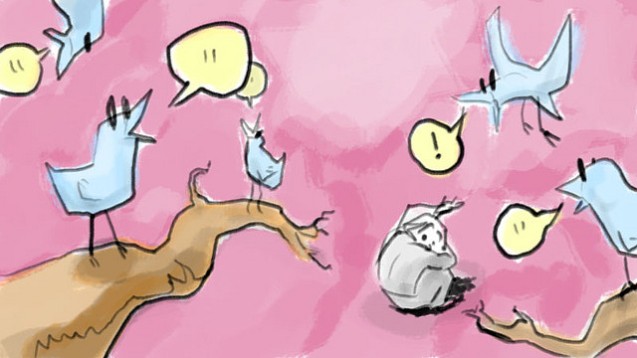
All talk and no teeth? Photo courtesy Flickr.com/petesimon – http://www.flickr.com/photos/petesimon/3365095019/
“LinkedIn is great but Facebook and Twitter are not really much use,” one FD reports. “Very large companies can use them for public relations, but finance is confidential; ‘the company is having a fantastic quarter’ is not really appropriate for sharing.” In the eyes of many FDs, Twitter is just noise, blather or gossip.
LinkedIn rules
Contrast those comments with the statistics our survey conjures up. Of the half of respondents that use one or more social media networking platform, almost all are in possession of a LinkedIn profile and 63 percent have a Facebook page. Even more surprisingly against the comments we received about its value, 37 percent have a Twitter account. In terms of the time they spend on them, a sizeable 25 percent use these every single day while 33 percent access them twice a week.
And these are not individuals that have been forced to start tweeting by their companies. Asked what the motivation for setting up these accounts is, most FDs told us it was purely a personal decision: just five percent were compelled to do so by someone senior to them at work.
Those using these platforms in the finance world have found that it is helpful in terms of their career, building profile and connections, as well as for locating and checking the backgrounds of prospective team members. Users of Financial Director’s LinkedIn group start and drive vibrant discussions on a range of issues affecting them, seeking peer advice and experience to make ever more informed decisions.
Businesses that maintain a block on employees accessing social media may be making a mistake. Of the three most recent uses of social media we asked them to share, 17 percent of FDs said they were researching rival companies’ products and services, and 20.4 percent said they were checking out the background and contacts of prospective senior finance employees. That is of immense value to any business. The third use was responding to requests to connect with headhunters or other FDs they view as helpful contacts, either to expand their network generally or because those individuals may prove able to help them into their next role. Indeed, 20 percent had received what they saw as a genuine and credible job offer through relationships forged on social media networks, while one FD had found his current role through a LinkedIn contact.
“LinkedIn is routinely used in my organisation for recruiting. I was recruited through my LinkedIn profile – I could not provide a better endorsement of its power,” he tells us.
Among those comfortable with it, social media networks are providing another way to expand an FDs’ influence and contacts, either by linking up with people they have met in person or with a mutual connection, as a platform to meeting them in person.
Nearly 40 percent of those using social media networks use them to raise their profile as an FD and a further 26 percent use them to get advice from their peers – in the same way a traditional meeting would, but in some cases with people it may have been tough to get an audience with or with those they simply may not cross paths with otherwise.
Old boys’ club
But the problems with social media persist. Some worry that the mode of connecting it provides is a retrograde move, not progress.
“Using a social networking site for recruitment would be divisive and potentially discriminatory. It smacks of a different type of ‘old boys’ club’, ” says one finance director. Another calls networking on social media sites “the lowest form of personal braggadocio.”
And what if someone takes umbrage – or worse, calls their lawyers – over your perfectly innocent tweet? The Independent reported last November that trainee accountant Paul Chambers was convicted of sending a menacing electronic communication having tweeted, in jest, that he would blow up Doncaster’s Robin Hood airport if it did not re-open after heavy snow. He later said he had lost his job as a result.
In the US, Computerworld.com reported last July that an IT staffing company had sued a former employee for violating the terms of their non-compete agreement by connecting on LinkedIn with a number of the company’s staff. It said that she had done so on behalf of her new employer. “If Ms Hammernik could be sued for striking up a conversation at a bar with an employee from her former employer, then she can be sued for striking up a conversation with that same employee on LinkedIn,” a reader commented.
Essentially LinkedIn
As for demonstrating the value in social media, LinkedIn comes out the clear winner. Otherwise, the pictured is mixed. Nearly seven percent of FDs responding to our survey said that they view social media as essential to business, 43.5 percent said it was useful sometimes and 28.5 percent said it was not that useful. Twenty eight percent said it was useless to FDs.
One FD reports that his last three uses of social media platforms were to make contact with a former colleague who works for a company his business is targeting for sales – using the contact to get an audience with that target company – to get back in touch with a former client and invite them to lunch – as a way to get them back in his active network – and to search the contacts of his connections for any potential target clients and shortcuts to introductions with them.
That is nothing you would not hope to do offline; it is just that these platforms make it possible and fairly discreet if done well. But that requires a time investment and a willingness to go on the learning curve – and without the hard numbers to report the usefulness of social media, many more FDs than not may find that the concept remains in that unknown unknown category.
I dun a poem, and then another
24 Jun
I guess because death is so much bigger than the extent to which the brain can comprehend and express itself in response, I found myself writing two poems in the last year – having not felt the need to do so for some years. The first catalyst was my grandma’s death last Autumn from cervical cancer, and this Spring, the unexpected and wholly devastating death of a friend’s newborn girl just two days after she arrived in the world.
I can’t explain why, but news of these events made me quickly reach for my laptop and words started coming out without any prior thought or ideas about what I wanted to say or express. They’re probably the most genuine work I’ve done in years inasmuch as they remain almost precisely as they came out of my brain, the words, the structure, the sentiments. I wrote my grandma’s poem because when I heard of her death I immediately thought that her funeral might not reflect accurately the impact she made in her life, on me, on our family, on her community – because she was a divisive character, frequently leaving a bitter taste in many mouths. I wanted to sum it up honestly, with the warmth I always felt for her and reflect with immediacy and brevity the type of character she was in my mind. Then some months later, two says after receiving a text from my friend saying she was having the beginnings of labour but waiting around, I got her second text that the baby was gravely ill and that she was to turn off the life support machine the next day. The galaxy of space between those two messages sort of tore a hole in my perception, in reality. I felt the need to put pen to paper immediately, thinking of how fleeting this little girl’s time as ‘a person’ on this Earth was but how her existence would have more impact on her family in 48 hours than someone could do in a lifetime of events. I wrote the poem to be read at the funeral; I was barely finished with my chemo and didn’t feel strong enough to go, so I sent the poem to be read in my stead. I was thinking of the little girl like I think about the clouds that pass over my local park: just as you catch sight of one little cloud, it changes shape and form before you can really acknowledge it, and then it’s gone, as if it was something you only saw in your peripheral vision.
Here they are.
For Binnie – “Blackbird”
Let’s not pay our last respects,
Because we won’t ever stop paying our respects.
She went in the night-time
As befits a blackbird soul
It was always her way, or no way at all-
and not everyone could see why
But hers was a path for one.
The Sioux princess hair,
A lifelong rebellion
Proof that this lady wasn’t for turning
I often wondered what secrets she kept
But I knew we’d never know
As befits a blackbird soul
It was always her way, or no way at all
Not everyone could see why
If you didn’t like it – too bad.
Why would this leopard change
Its spots
When it trod a path for one?
True, to love her could be cold
Lonely, to take a bitter pill
I often wondered what secrets she kept
But I knew she’d never tell
So let’s not pay our last respects,
Because we won’t ever stop paying our respects.
She went in the night-time
As befits a blackbird soul
It was always her way, or no way at all.
For Madeleine – “A little cloud”

A wee passing cloud. By Flickr/ Southernpixel Alby.us – http://www.flickr.com/photos/southernpixel/420586146/sizes/o/in/photostream/
In a perfectly azure sky, on a spring day
I saw a tiny puff of white, a cotton wool ball
drifting, with no hint of where it came from
or where it was going
No one could have caught this little cloud
and I could barely keep it in my sight
Its form, almost round one second, ragged the next
torn, pushed, pulled, encouraged by invisible hands way up there
so lonely, but not sad – for it was free.
The wind took that little cloud away from me, I only ever saw it
from the corner of my eye,
and in a blink
it was not only somewhere else
but had a completely different form
no shape I’d ever seen, nor that there would ever be more than one of again.
A shape and form with no name, that had no use for such things
Because there was somewhere else that cloud had to go.
Where? I don’t know,
But in its way, wafting, rolling, puffing,
It knew, and seemed happy that way.
And then it was gone, without a chance to say goodbye
I went home, thinking about that little cloud.
The wind took that little cloud away from me, I only ever saw it
from the corner of my eye.
It’s somewhere else – something else now; I can hear an almighty downpour over the hill.
That little cloud is feeding the snowdrops and the daffodils.
That gurgling river, it’s filled with that little cloud.
In a perfectly azure sky, on a Spring day, that little puff of white, that cotton wool ball
Is at home – all around us, and forever.
From my archive: Matt Sharp’s first solo album
11 Jun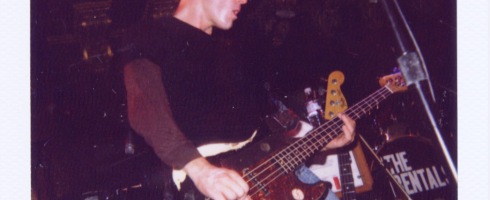
They say the devil makes work for idle hands and it’s true. I got to go to a private gig played by Matt Sharp, the first bassist in Weezer, and then meet and interview him – and then have drinks with him – because I was bored one night and, in a bet with myself I didn’t expect to come good, I emailed his PR asking for an interview. I thought if I ever got it, I’d sell the interview to Word magazine or NME; once the PR wrote back practically biting my hand off to interview Matt as he was coincidentally going to be in London, well, I couldn’t come up with a convincing enough back-out excuse, so I had to do it. I should have known that perhaps the PR’s keeness for a total music writing novice to have exclusive access to his charge probably indicated the music press’s relative indifference to him. No matter to me though: I was and remain a huge Weezer fan and I am probably a slightly bigger fan of Matt Sharp’s own project, The Rentals – so I was meeting one of my idols and getting an article to sell into the mix. Sadly, Matt is too niche and unknown as a solo artist for the British music press and I couldn’t shift the pitch. But I wrote up the interview for an internet culture magazine called No Innocent Bystanders – sadly long gone now – and here it is. Happy times.
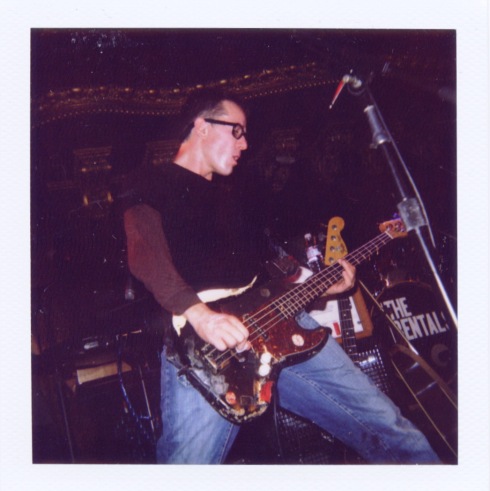
Matt Sharp. Photo courtesy of Honeycut07 from Flickr. http://www.flickr.com/photos/honeycut07/1079612022/sizes/o/in/photostream/
Matt Sharp – Campfire music from a pogoing Falsetto boy
Matt Sharp’s solo album is collection of Nashville, Tennessee-flavoured regrets played out on lap steel and acoustic guitar- but he’s not holding his breath for the masses to understand his transition to grown-up country from Weezer’s pogoing bassist, via the celebratory Moog-bashing Rentals, finds Mel Stern
If they didn’t find him quite so hard to comprehend, Matt Sharp could have been the new poster boy for oldies’ rock mags like Q or Mojo. His current album, a continent away from the celebratory pogoing, football-chanting, sex-show haunting Rentals’ record Seven More Minutes, is the epitome of introspective; at the risk of patronising, it’s a coming of age piece. So quiet and wistful it’s at constant risk of sinking into the ether unless you strain your ears, it could be in the same ballpark as Elliott Smith or Lambchop minus the strings, recorded live from the Yorkshire moors. But the rags won’t let it be – since they can only remember Matt the pogoing, falsetto-screeching one from Weezer, the new one-man-and-his-woes brand isn’t quite Top of the Pops enough. It’s “too peripheral, too obscure, etc” for Word; “not really our bag” is the NME’s verdict. “It’s a songwriter’s album” reckons Matt’s UK PR, who hosted an invite-only gig for hardcore fans at Spitalfield’s tiny Redux last month to launch his European tour with fellow lo-fi’ers, Goldenboy. It’s a fair assessment.
Fresh out of a hideously personal legal battle with the Weezer camp over unpaid royalties in 2001, Matt took flight to a country house in Leipers Fork – a leafy outpost of Nashville, Tennessee soaked in Cherokee bloodlines, with horse farms and a little chicken ‘n’ ribs place by the name of Puckett’s Grocery, namechecked in Matt’s pre-album EP “Puckett’s versus the Country Boy” – to get all up close and personal with himself and “make a very raw record that attempted to tear down the barriers between what I wanted to say and the people that were listening.” At the risk of controversy, this record is to Matt what the under-selling, under-rated genius “Pinkerton” was to Weezer – and many still think Matt’s inclusion on that post-Seven More Minutes record was what made it such an unforgettable lo-fi gem.
Matt Sharp is a record heavily informed by surroundings, themselves informed by a wish to get away and figure out some depressingly familiar vicious circles. “When I came to London to record Seven More Minutes, I thought it wouldn’t take anything more than six weeks. The record label gave me carte blanche – there was no critical year, no deadlines, no restrictions. I was given Madonna’s credit card and the keys to the city with it, like, ‘you wanna make videos? You wanna bring in collaborators? Whaddya wanna do?’ says Matt. “So I was 75% done, and then I found myself slipping deeper and deeper into a kind of chaos that I didn’t expect, and I was suddenly in way over my head. It was more like some epic, like chopping my way out of the jungle in Apocalypse Now, only with a butter knife – overweight, with a big old beard, wanting to put a gun to my head. Afterwards I promised myself never to do that again, so I decided to remove myself to Leipers Fork, thinking this current record would take about three weeks…then over time I found myself in the same position again, the same scenarios again, being in this whirlwind where I couldn’t grasp the last 25%. I didn’t have a clue how to make this record, but I still didn’t think it would take me three freakin’ years.”
OK, so Matt’s solo effort doesn’t have the infectious acoustic hooks that Nordic due Kings of Convenience do, and though he’s clearly been working on some personal demons, he’s not tortured enough to be the next Nick Drake. Neither is he interested enough in raking in the dollars to be hyped like Badly Drawn Boy. And thank Christ for that: so quiet and wistful are daydream tracks like “Visions of Anna” (‘visions of Anna make me cry/the sweetness of our youth has died’), or “All Those Dreams” (‘driving your car for days/for fear of second place’) it’s at constant risk of sinking into the ether unless you strain your ears. Its strength is its sparing use of, well, everything, from lyrics, to melodies, to number of instruments; put it on at 3am after a night out, light a couple of candles and let it wash its way through your head. It’ll be sure to send you into the best night’s sleep you’ve had since you used your mum’s lavender Radox salts in the bath and put on brand new M&S cotton socks.



